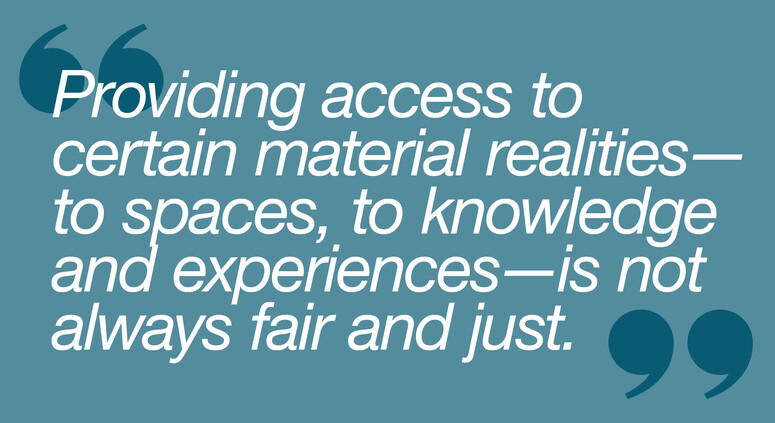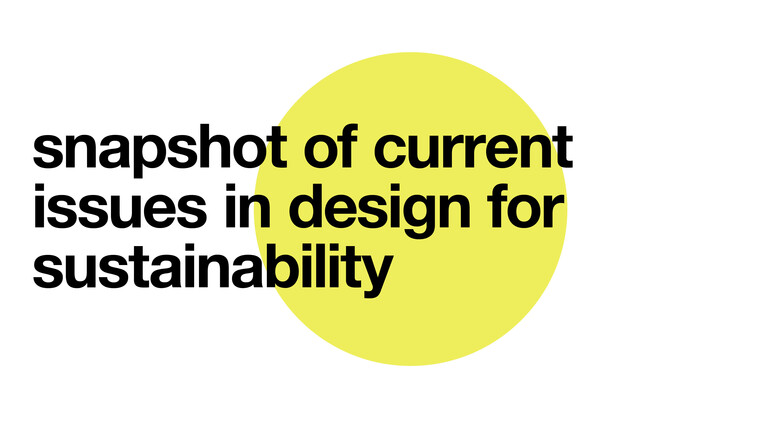the high cost of buying "design" on spec

24.03.2021 Editorial
The provision of uncompensated work on the gamble that payment will eventually be forthcoming is called “speculative work”. The designer, instead of providing a service for agreed upon assured compensation, speculates that they might receive compensation—financial or other—for work already provided. This practice encourages designers to compete against each other, working for the possibility of remuneration, in conditions that are not beneficial for good outcomes. This practice is unprofessional, detrimental to designers and produces worse results than could be obtained through a collaborative design process consistent with accepted standards of professional practice. Yet, the practice persists.
The International Council of Design strongly believes in the value of professional design and fair compensation for design work and discourages all practices that engage designers in any kind of speculative, unpaid work, including competitions of a speculative nature. Such practices undermine the value of design and the professional standing of designers. But this is not just an issue for designers. This practice also has detrimental impacts on the quality of business outcomes. See our stance on Unpaid Work.
WHAT IS DESIGN ANYWAY?
Many design clients do not understand what they are paying for. Because most designing ends up in the creation of some concrete design—an object, a layout, a logo, an environment, etc.—it is easier to think of design as an end product, rather than as a professional service. If you are in the market for a corporate identity and under the impression that what you are paying for is only an arrangement of letters and symbols, then it is understandably difficult to grasp the difference between an identity that costs millions and a 99¢ "logo". Yet, as many businesses with successful corporate identities can tell you, the value that can be contributed through good design can in fact greatly exceed the millions. And a poor logo choice can actually cost companies in lost revenues, the costs of having to rebrand, and costs sunk into investing in a website, collaterals, packaging etc. which need to be rebuilt or recalled.

Nike Logo worth $26 Billion according to Wikipedia
First, it is important to understand that design is a professional service. The work that goes into the "arrangement of letters and symbols" or into a design like an iPhone (whose original premise was to look deceptively simple) is not necessarily visible—especially not to non-design professionals. In fact, the better the designing, the more invisible it often is. Truly great design seems obvious. The quality of a design only becomes evident in the way the designs are used, often only over the long term.
BUT IF I ASK MULTIPLE DESIGNERS TO PITCH ME, I GET MORE GREAT IDEAS!
The design process is not haphazard. Good design solutions do not result from instantaneous flashes of inspiration. If you receive more submissions, there are not statistically more probabilities of the 'right' one appearing. A professional designer, following professional methodology and using the professional judgement they have honed over many years of training and on-the-job experience, will come to a solution that is of professional calibre. But this requires serious research, interaction and development. No amount of amateur 'guessing' will happen upon these results. As a consumer, un-trained in evaluating the quality of the design, a client might not perceive the difference between good and bad design. However, the downside of investing in poor design– for example, poor market reception of an ill-designed product or a derivative corporate identity which fails to distinguish the company – will inevitably become apparent.
Another part of the design process that is greatly misunderstood is the importance of collaboration between the client and the designer. Though the design process seems mystical to those who are unfamiliar with it—and in fact some designers make efforts to create and maintain this mystique—the process follows a methodology that, when applied systematically, ensures a professional output, and is highly beneficial to the client.
When a designer meets with a client, the design process evolves between the two:
- in a corporate identity project, to produce a logo and other identity components, understanding the DNA of the entity, its market environment, and its unique strategic objectives is very important. This involves knowing more than can be presented in a written brief. Developing concepts which will lead to a successful identity design requires understanding what makes the entity unique. This can include the entity’s origin and history, corporate culture, product or services, positioning, values, and competitors.
- in furniture design, understanding the client’s design aesthetic, history (including previous product lines), key competitors, and target audience are crucial. However, other factors such as the company’s manufacturing capabilities, the availability of local versus imported materials, particular expertise, the values of the company and leadership, existing and future clients, the leadership’s comfort with risk-taking and aspirations for the company may be equally important.
- in fashion design, a contract for uniform design for a specific industry, for example, would necessitate an understanding the client’ industry, the company's history and legacy, its positioning in the market, safety and comfort standards, and the company's visual identity and values.
Without investing in this level of understanding, only possible through direct, intimate interaction between the client and the designer at the outset of the design process, the quality of the final product will be compromised. A speculative process may result in a higher quantity of results, but will not necessarily result in better results—in fact, quite the opposite.
The objective of a professional design process is the development of an original design, reflecting the unique strategic objectives of the client, in order to result in a design differentiated from others—building the business's global brand. Speculative work results in the opposite result: simple, “me-too” generic designs that reduce differentiation with competitors, diminishing the brand.
Some other examples of costs associated with receiving un-professional design services include:
- In product design: receiving a design that is very close to something that already exists, rendering it difficult to create a market for a "me too" product or even exposing the client to lawsuits if the original product has sufficient intellectual property protection and will pursue legal action. This can happen for two reasons. First, it is faster to copy something than to create something new. If the brief is vague and the "designer" is unprofessional, it is more economically efficient to submit the same work to as many bidders as possible. Second, there is a risk that the work will be incomplete. In a bidding situation, it becomes economically expedient to pitch half-baked ideas, and send work before the design process has been carried to the end.In most cases, the cost of producing an industrial design object is high compared to the cost of the design. The initial "savings" of buying unprofessional design will be more than offset by the costs of trying to produce an object that has technical issues to work out, has not been adequately tested, and will sell less well than a better-designed alternative.
- In logo design: Once a logo is approved, it becomes the foundation for the corporate identity of a business or product. The initial investment in logo design is compounded by the subsequent investment in a website, packaging, letterhead, and any number of surrounding marketing materials developed around the logo. If the logo design turns out poor—too close to an existing logo, culturally insensitive, unintentionally obscene, impossible to be implemented in different media, or simply unremarkable—then these are all sunk costs that will need to be reinvested when the logo is redesigned. The damage to the brand cannot be repaired. The client will also have lost valuable time—including lost sales, delayed campaigns, and the confusion caused by multiple rebrandings—which could have been avoided had an investment been made into a professionally sourced logo design.
ONLINE CROWDSOURCING PLATFORMS
In recent years the "gig economy" has blossomed as online platforms have disrupted traditional services. Uber makes taxi drivers of anyone with a car, Airbnb makes hoteliers out of anyone with access to a property, and increasingly, so-called "freelancer" sites like 99designs, Fiverr and others have commodified the design services sector—especially graphic design.
The issue is that while these are freelancing sites, very few of those supplying services through them are in fact professional designers. In a recent survey by the platform 99designs, the crowdsourcing platform found that of those selling so-called 'design services' on their platform, only one in five "believed a formal education was crucial to succeeding as a creative." A large majority (82%) of "freelance designers" said that they had "taught themselves new professional skills during the pandemic," with most of those citing YouTube tutorials as the basis of their training. While this does not discount these individuals as professionals, most students availing themselves of the tools miss key components of a necessary design education, such as ideation, business practices, an understanding of intellectual property, and concept development. From the standpoint of the buyer of these services, this is problematic because they will receive an inferior service, which will not create the desirable value for the business. Additionally, if the logo infringes existing copyright or trademarks—something the client will be unaware of until the infringed party contacts them—the client may incur legal costs which could be substantial.
THE OPPORTUNITY COST OF THE WRONG "DESIGN"
While it might be easy to point to disaster stories of what happens when a company invests in poor "design," something that is much harder to quantify is the opportunity cost of the wrong design choice for your company. A logo may be attractive, relatable, legible, etc., but still not be the best possible choice for your product or company. While an adequate visual identity may suffice, you will never know how well a better design could have performed. When so much can be riding on the quality of the design, even something marginally better could compound into very large gains in potential sales.
The choice to invest in design is always difficult because the cost of design is incurred at the start of the process, requiring layouts of cash even before it is known if a product or business idea is going to be viable. Additionally, clients are not always knowledgeable enough to distinguish quality design from adequate or even poor "design." The result is that an investment in design seems to be even more 'risky,’ and the temptation is to try to mitigate that risk by asking for free pitching or other speculative work. However, this is exactly why one should invest in professional designers. When acquiring a service that will require a large investment, it does not pay to risk having a poor outcome. Design is a first step in a process that compounds the initial investment. If this foundation is laid improperly, the effects of that initial decision will be amplified.
“Spec practice” is in fact speculative for both parties in the transaction. For designers, it is a speculation on whether or not they will be paid for their work. But for clients, there is also a great amount of speculation involved (especially for those who procure "design services" from unknown designers through crowd-sourcing websites). Engaging in speculative practices exposes the client to the very real risk that they will receive poor quality work and be exposed to legal issues stemming from intellectual property infringement. Given that design is the first step in a process that entails a further and more substantial investment into the development and production of products, goods, collateral, etc., this is a costly risk. Like all things, quality design costs. But so does making the wrong design decision.
LEXICON
OPPORTUNITY COST: The loss of the potential gain that could have been possible from the alternatives not chosen. The opportunity cost of choosing—and investing in—one design is the loss of the profit and success that would have resulted from choosing its alternative.
PRO BONO: It is widely misunderstood that the Latin ‘pro bono’ means ‘for free’. In fact, the term means ‘for good.’ To work to advance a deserving cause is encouraged. However, the precise working relationship between the designer and the recipient should be carefully determined, defined and described in an agreement. The conditions of unremunerated work, including ownership of rights, should be adhered to strictly. The value of the design services rendered should be communicated clearly to the pro bono recipient.
SPECULATIVE PRACTICE: Speculative practices (also called ‘spec work’ or ‘free pitching’) are defined as: design work (including documented consultation), created by professional designers and organisations, provided for free or for a nominal fee, often in competition with peers and often as a means to solicit new business. The Council recommends that all professional designers avoid engaging in such practices.
INTELLECTUAL PROPERTY RIGHTS: the intangible rights to created works, such as written works, works of art, designs, images and symbols, musical works, filmed works, software, inventions, and other works. In most countries, intellectual property rights cover four broad categories of rights: copyrights, patents, trademarks, and trade secrets. Intellectual property rights are exclusive rights, granted to “rightsholders” (creators or authors, inventors, and businesses). By enabling creators to monetize and profit from their work, intellectual property rights encourage the development of creative expression, new technologies, and new inventions, resulting in economic growth.

relatedarticles

robert l. peters: guiding the future of design

ICoD interviews elizabeth (dori) tunstall on decolonising design

it may look good on instagram but you want to enjoy living in it

designing for access
